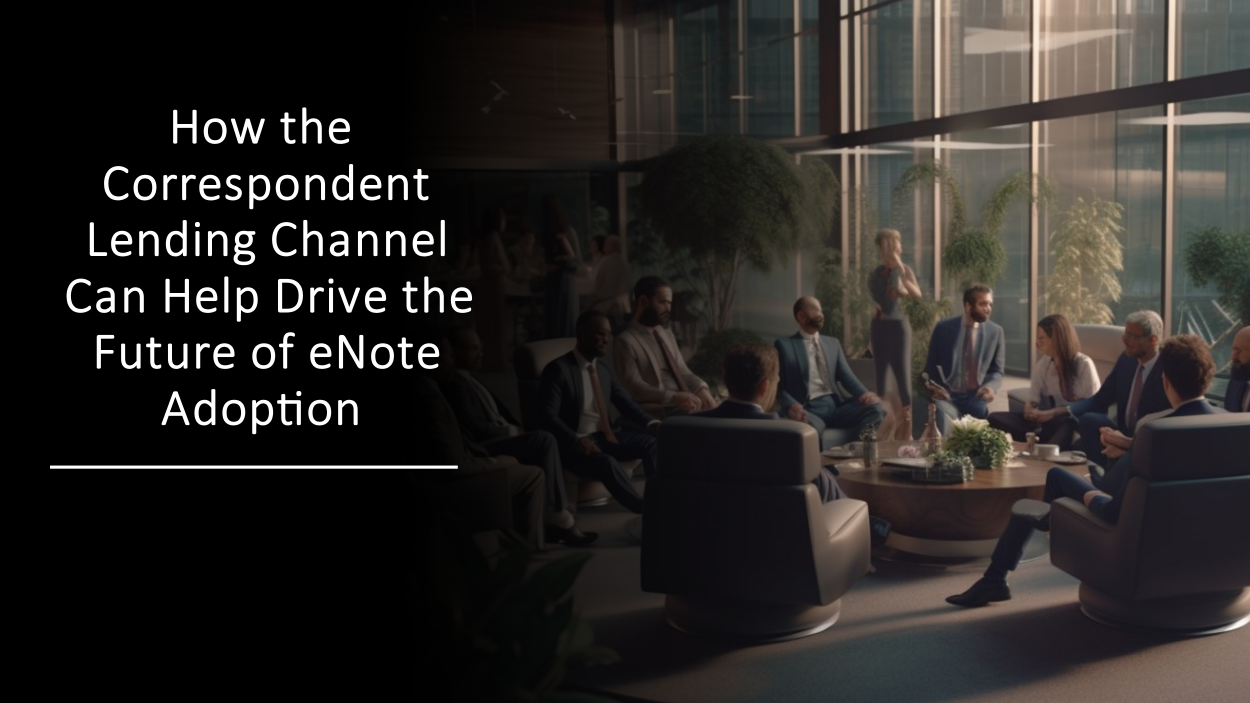Jim Voth leads the Digital Mortgage practice at Falcon Capital Advisors, Washington, D.C., where he manages digital transformation engagements for GSE, government, and banking clients. He can be reached at [email protected].
Q: Conventional wisdom is that digital mortgages thrive in a refinance environment, and less so in a purchase market. Is this in fact the case, and has the pivot to purchase resulted in a big drop in eNote origination?
JIM VOTH: Certainly, the prevailing view is that most of the progress to date with digital mortgages has been on the refinance side of the business. Not surprising really since the nation’s largest originator, and by far the biggest source of eNotes registered on the MERS Registry has been a refinance powerhouse. At the moment there is no industrywide source that specifically tracks and publishes the purchase and refinance split for eNotes. However, there are other large lenders, including the one we’ve already mentioned, who are doing eClosings for purchase as well as refinances.
That said, overall eNote volume was down in the first half of 2022, according to the MERS eRegistry. As a percentage of total originations, however, eNotes are tracking at 6% of all originations, slightly ahead of the 5% they were at in 2021. There are simply fewer of them because overall mortgage volume is down. Purchase loans now make up more than 50% of overall volume, which suggests that lenders are creating eNotes using purchase loans.
The logistics for a full digital closing are easier in a refinance transaction because the lender has more control over the settlement and notarization methods. But at the end of the day, the manufacturing process for digital mortgages is the same for both purchase and refinance loans.
That doesn’t mean that there aren’t some cultural and logistical challenges when it comes to fully digital purchase loans where the note, security instrument and other loan documents are signed electronically. In a purchase transaction, the seller, or more often the Realtor®, selects the title company. To do a fully digital mortgage, the title company must have access to an eClosing platform with in-person electronic notarization (IPEN) or remote online notarization (RON) capabilities, and of course access to an eNotary. Not all of them do, but this is rapidly changing. The lender can also provide the title company access to these tools via their digital mortgage vendor relationships.
Another challenge is that traditional in-person closing ceremonies are often encouraged by loan officers and real estate agents for purchase transactions. But there is no reason why these can’t remain traditional in-person ceremonies but with electronic signatures and eNotarization (i.e., IPEN).
Q: In a smaller, way-more competitive purchase market, is it wise for lenders to try to introduce eClosings to the borrower experience?
VOTH: One of the benefits of technology is that it gives consumers more options. Viewed from this perspective, lenders aren’t trying to shoe-horn borrowers into a single path. Many borrowers select lenders based on their promise of making the origination process faster and less painful. You know what’s not fast and not without its pain points… being given a pile of important legal documents on the day of closing to read through for the first time and sign while a settlement agent, notary, and potentially others wait on you. I think most people would agree that a much better experience is when you are given a chance to carefully review those documents in the comfort of your own home and, in some cases, sign them before coming to the closing ceremony, which by the way is now shorter because you’ve already reviewed and signed many of the documents beforehand.
In addition to offering a more modern customer experience, eClosings have significant economic advantages for lenders. Recent ROI studies have found that fully digital mortgages can save lenders and title companies over $400 per loan. Given that the most recent MBA numbers show that in Q2 the average lender lost $82 per loan, a gain of a few hundred dollars is not insignificant.
Not everyone will be persuaded immediately, which is why it will take a while before the majority of mortgages are fully digital. But make no doubt about it, those who think we’re going to scrap digital innovation to stick with ink are betting the wrong way. Fully digital is the future and the benefits are too great to pass up.
Q: What can lenders do to make the eClosing process more “purchase mortgage friendly”?
VOTH: As we’ve mentioned, they can offer borrowers more options. This could include fully remote closings, hybrid closings (i.e., where one or more of the closing documents are signed electronically, be it remote or in-person)) or fully in-person closings ceremonies but with digital signatures. For the foreseeable future I think many borrowers will still want a traditional in-person ceremony for purchase transactions. That’s why we anticipate an increase in IPEN to enable this latter option.
Q: What can lenders do to ensure adoption of a digital mortgage program across both purchase and refinance?
VOTH: There are several factors that a lender should consider to ensure the successful adoption and scaling of a digital mortgage program. Best practices include executive sponsorship of the digital transformation effort, clear transformation strategies, managing to objectives and milestones, and dedicating resources through full adoption. Not getting stuck in pilot mode is also critical.
Our conversations with lenders, as well as other recent industry research, has shown that internal resistance to change is one of the biggest challenges to digital mortgage adoption. One proven way to move the culture forward is to make eClosing the default setting in the origination process. In addition, a phased roll-out beginning with hybrid digital mortgages where some of the closing documents are eSigned can be an interim step to introduce change more gradually.



